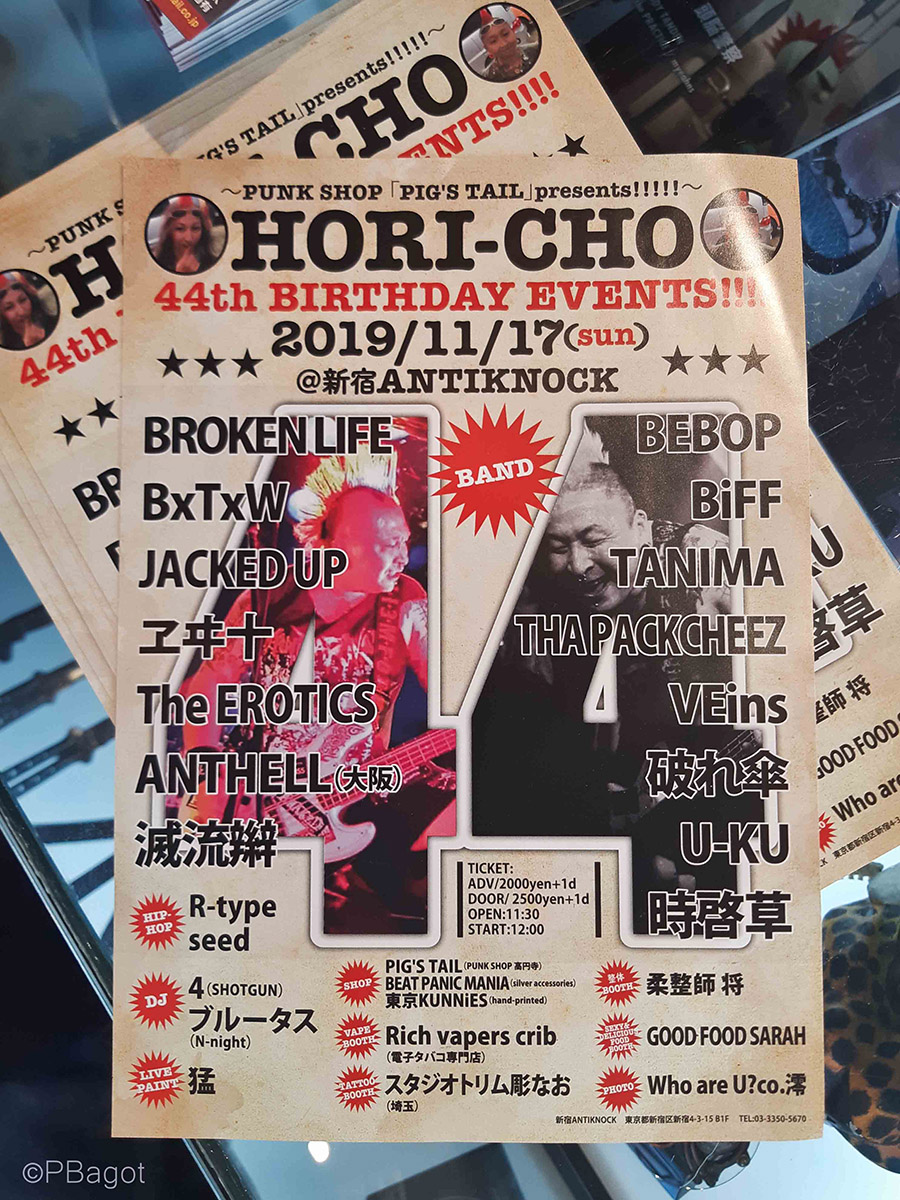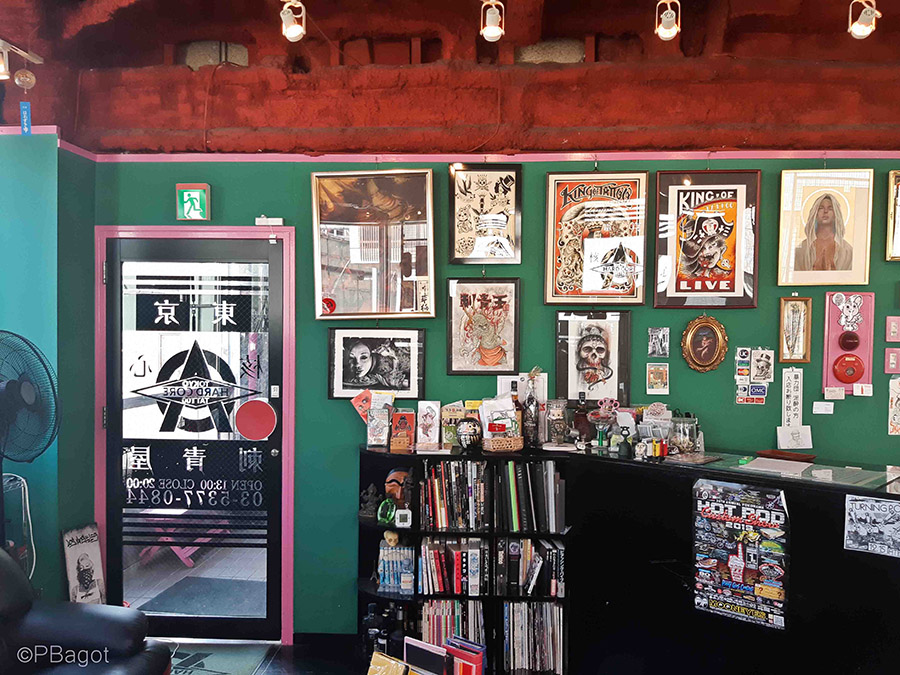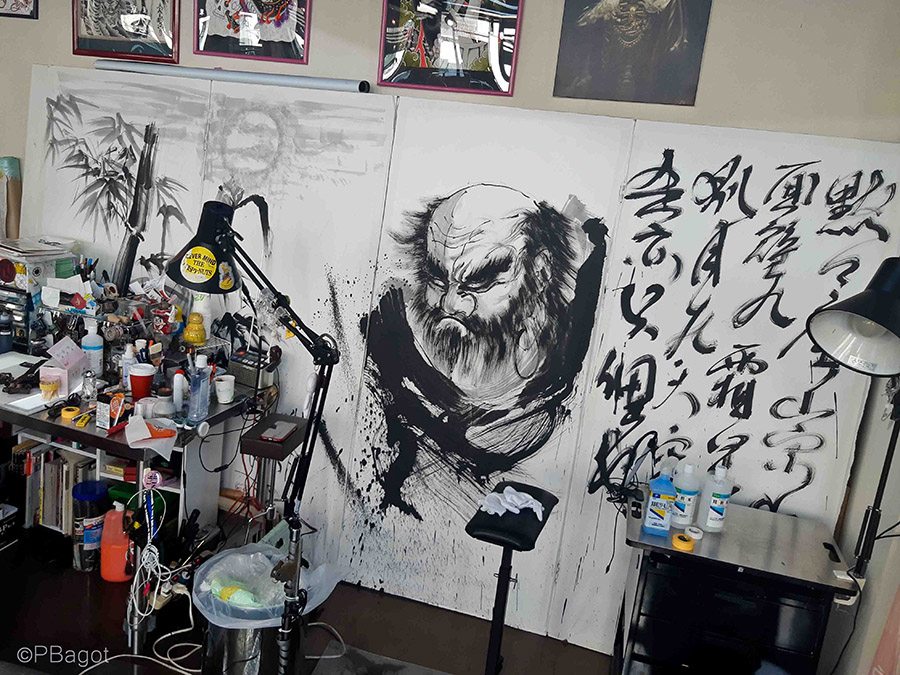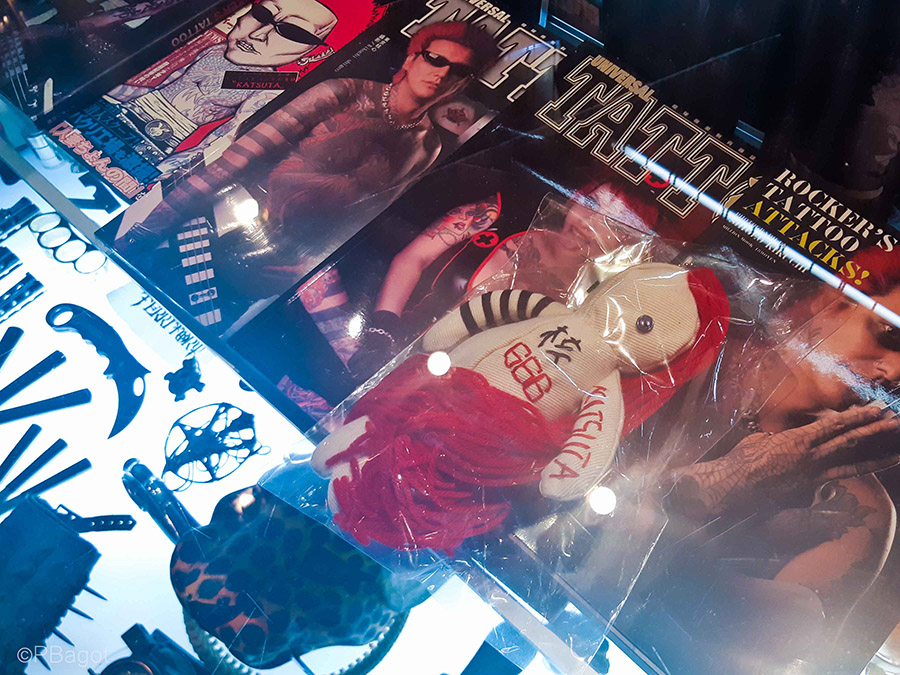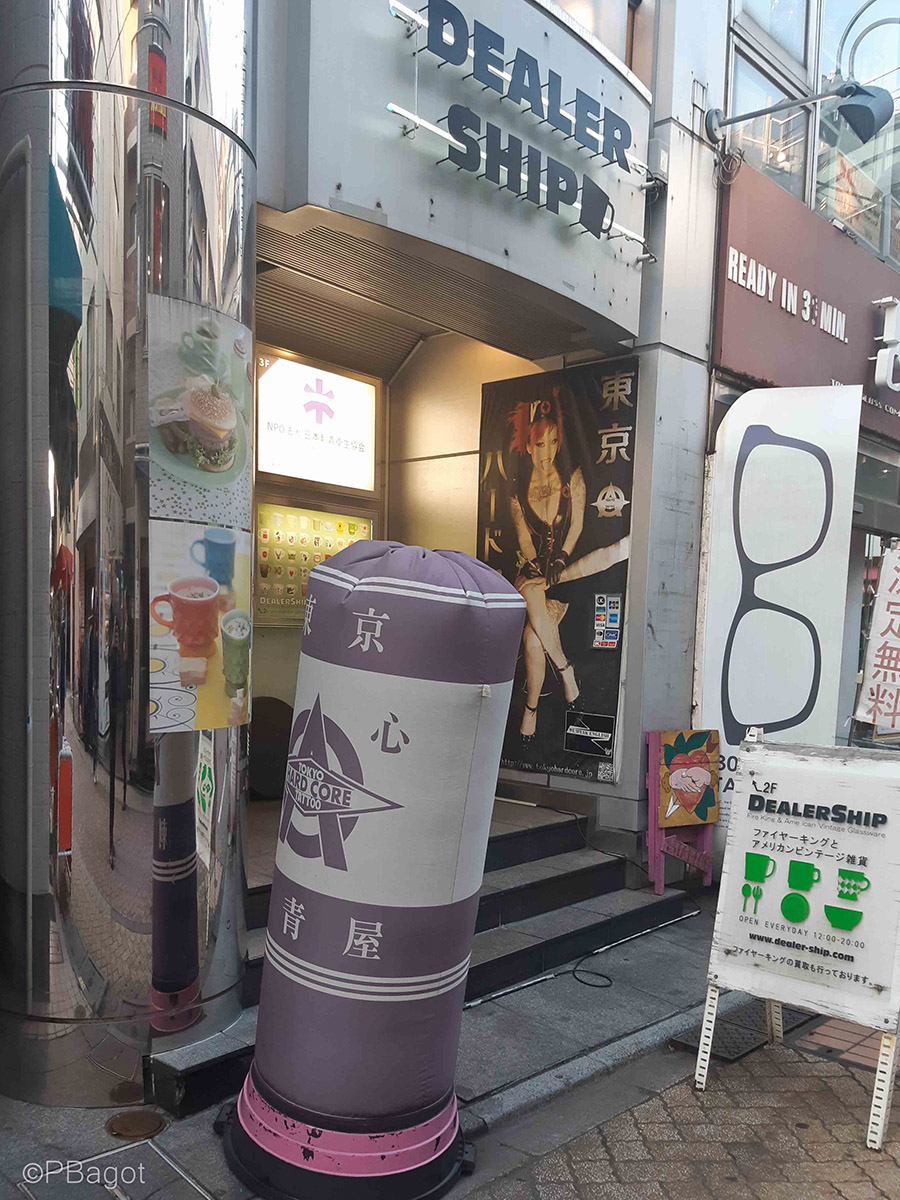Located a few stations away from the huge hub of Shinjuku station in the district of Kôenji, one of the hottest in Tokyo, Tokyo Hardcore studio is still a reference among tattoo lovers. It is also one of the crossing point for rockers on tour who, when they are playing in Tokyo, never miss to come here to get ink.

If it is true that the area got gentrified through the years and became a meeting point for collectors of vintage clothes and objects who rush in the numerous shops dedicated (there is one above the tattoo studio selling a huge and very expensive collection of old mugs from the four corners of the world), Kôenji still kept its love for the underground. The numerous rehearsal studios, rock-bars, small venues and tattoo studios claim their alternative roots and their affiliation to the original rebel identity of the district. That one specifically which, more than 15 years ago, motivated Katsuta Noriyuki, figure of the Tokyo punk & hardcore musical scene, to open his shop : Tokyo Hardcore Tattoo.


Passionate about the ink culture, the pink-haired tall punk with a tattooed body-suit, belongs to the pioneers of the early 2000’s who opened places dedicated to freedom and creation for tattooers. Studios in a street-shop version, emancipated from the discretion cherished by horishis -the traditional Japanese tattooers- who prefer the quietness of their private and hidden studios, and from which making grow the contemporary tattoo culture in Japan. It already knew a significant kick some years earlier with the launch, the same year in 1999, of the first tattoo magazine in Japan –Tattoo Burst- and the first Tokyo tattoo convention. Besides the opening of Tokyo Hardcore, Katsuta took the opportunity through initiatives his skills a an entrepreneur and later organises his tattoo convention. Titled : King of Tattoo, several occasions will make it a success before the event is finally suspended, until this day.



Throught the time, Tokyo Hardcore Tattoo has finally became a converging point for the tattoo culture in Tokyo. Tattooers learnt their job here before leaving for new adventures and others staid, appreciating the free spirit of the place. Today, the studio’s team is quite flexible, with resident tattooers and semi-residents (Horiken, Garyou, Osakabe, but also Nobu Isobe, Horishige or Nana Nakagawa). It is also welcoming guests, some prestigious like Spanish superstar Robert Hernandez, who visits regularly. All of them share this irrevocable desire to live outside of the strict rules of a formated Japanese society. And no matter what pressure Japanese government put on tattoo studios these last years, the shop is still open, with signs on the sidewalk and neons.


On the counter inside, a poster titled « Save tattooing in Japan » is a significant claim. It recalls the fight that everybody in the Japanese tattoo scene keeps in mind, especially among progressists and new generations, for the last couple of years: the right to tattoo legally and professionally in Japan. A right actually denied to tattooers that is at the heart of an ongoing legal procedure since 2015, lead by a young tattooer from the city of Osaka : Taiki Masuda. After several rounds everybody is now waiting for the final verdict. Expected for 2020, it could ban once again tattooing in Japan, as it had been previously the case for almost 80 years, from 1872 to 1948. Or maybe, open a new era ?





Located at the second floor of a small retro-modern building, the atmosphere in the studio is as cool as you could expect. Comfortable even though a little bit messy with punk guitars coming out of the speakers. On the walls, some decoration with punk relics: an old leather jacket pinned, some knives and American fists in the window counter, old gig tickets, etc. Spacious, welcoming, the studio has also a lot of light coming from the big windows from which you can enjoy the view on the surrounding’s roofs.


With the democratisation of tattooing, the shop adapted to a more open and diverse clientele, to whom the various styles of the tattooers suggest a wide range of possibilities: Horiken has versatile skills; Garyou likes especially the Japanese style and Osakabe is more into the American traditional; For Nobu Isobe everything is between realism and morbid and Nana is more into the girly motifs. Then, Horishige represents the traditional Japanese style done in tebori – the hand poke technique. In short, you would have understood, if you happen to come to Tokyo, come at the studio to have a whift of the freedom that blows in Kôenji and especially at Tokyo Hardcore Tattoo studio. + https://tokyohardcore.jp IG : Studio : @tokyohardcoretattoo Horiken : @thcthk Garyou : @ garyou_ink OSakabe : @osakabe Nobu Isobe : @nobuisobe666 Nana : @inked_nana Horishige : @horishige









































